Our journey from Paro to Thimphu (the capital of Bhutan) took about one and a half hours on a very windy road, peppered with labour intensive, yet low key, road works – people in pairs doing jobs like filling potholes. Even though we had managed to nap after returning from our pre-dawn Paro Festival (see previous post) we were still sleepy enough to doze in the van on the way, so quite a bit of scenic countryside was missed. Not to worry, will catch on the return trip.
Hotel Druk
We arrived at Hotel Druk late morning, and were greeted with a drink in the lobby while we waited for our rooms to be ready. The hotel certainly looked the ‘biz’ of a 5 star, but we have also been told that a 5 star in Bhutan is like a 4 star elsewhere. We were shown to our corner suite, which was large but had the strangest configuration of a room I have ever stayed in. There was quite a lot of, well, useless space: a wide corridor that led to a very small sitting area, then there were all these other spaces cordoned off in unusual ways with doors and walls that seemed unnecessary. There was a great space for storing the suitcases – the best I’ve ever used, but at the sacrifice of space in the bedroom area – my side of the bed had less that 30cm between it and the sliding doors that closed off the bathroom. The colours worked well – the feel of ‘old’, yet luxurious, with dark wood and cream marble. The bathroom was lovely with its shiny surfaces and flattering lighting, but the hot water took forever to come through the tap, then didn’t mix well, then ran out before we could have two decent length showers. They did have a gorgeous big bathtub, but I didn’t risk trying to fill it when there was so little hot water.
Lunch that afternoon was had at Edelweiss Restaurant, which provided a steaming hot buffet, our first truly hot food in Bhutan – everything else has been served lukewarm. We were introduced to a new vegetable as well – ferns, which are delicious greens. Our other choices included red rice, stir fried vegetables and a smattering of those tiny, hot chillis. Pretty much a perfect lunch.
Trashi Chhoe Dzong
Our afternoon was efficiently spent going to quite a number of tourist attractions. Trashi Chhoe Dzong was the ‘biggie’, impressive in scale and beauty, as was appropriate for the nation’s capital. Even though this religious fortress was rebuilt in the 1960s (apart from the chapels in the centre), it was done so in the traditional fashion – without nails or architectural plans. The interesting thing about this building is the combination of its religious and governmental roles, housing both monks and civil officials. Interestingly, the king and queen don’t live in such splendour; their residence is a very modest building, no palace, but an ordinary sized house shielded from prying eyes by large trees, nestled at the foot of the dzong by the river. According to our guide, Pema, they are very ‘down to earth’ and modern – they even have a Facebook page.
National Textile Museum
The National Textile Museum is the newest building in Thimphu (and part of the Royal Textile Academy). The museum’s new home opened in 2013, and the significance of this living national art is reflected in the structure, both in the scope and magnificence of what is completed as well as the continuing construction of the other phases for the administrative blocks and the banquet hall. Unfortunately, photos were only permitted in the foyer, but this museum is filled with stunning, colourful and finely crafted examples of this skilful Bhutanese art – definitely worth the visit if ever in Thimphu.
Weekend Market
A weekend market is always a fascinating experience in a new country; while a lot of produce may be familiar there is always something exotic and new available. We saw plenty of the ferns we ate a lunch, bunched up like asparagus, ready to buy. As the Bhutanese love of chillis is pretty much unsurpassed by any other country, there were entire stalls that sold only chillis. They were of varying degrees of ‘hotness’, shapes, sizes, dried and fresh. When I asked Pema how to tell when shopping what degree of ‘burn’ you were buying, he smiled and shrugged, ‘ask the vendor’! At these markets, the vendors from throughout the region start arriving on Thursday and Friday, and don’t leave until Sunday night – plenty of opportunity to get the weekly shopping done.
I was surprised to discover that there is no inflated price for tourists and cheap price for locals when shopping – everyone pays the same. Also, all food is grown organically in Bhutan, there has never been a history of chemical usage in farming, and it is something they are rightfully proud of, so hopefully that won’t change in the future as the country opens further to the influences of the west.
Buddha Dordenma
Our final sightseeing focus for the afternoon was the hill overlooking the capital where construction was continuing on a 51m high steel Buddha Dordenma painted gold (AMMENDMENT: construction was completed in September 2015). The statue sits on a three-storey throne that will eventually house several chapels, while the statue itself will contain 125,000 smaller statues of Buddha. The spot provides glorious views of Thimphu valley and the town, but the wind and cooler temperatures meant that we didn’t have much desire to stay long. Apparently, Bhutan’s hope for this huge golden beacon is that it will be named the 8th Wonder of the World. We shall have to wait and see.
Cost of visiting Bhutan
Most people are under the misapprehension that Bhutan has a cap on the number of visitors per year. This is not the case – they do have a daily fee of $250 USD pp for being in the country, but that covers your accommodation, meals, guide and driver, as well as contributions to the health and education of its citizens. The accommodation is of a 3 star quality, and you can pay an additional supplement if you are interested in staying somewhere more luxurious. Tourists are not permitted to ‘go off’ on their own (for activities such as trekking), and your guide and driver take you wherever you wish to go in the country, following an itinerary planned with you prior to travel. The cost and these restrictions are Bhutan’s way of preventing the country from becoming a ‘backpacker ghetto’ – they have no desire to be the next Nepal, and in fact, it is illegal to climb any mountains in Bhutan higher than 6,000m (they have the highest ‘unclimbed’ mountain in the world – Gangkhar Puensum, 7,570m).
Our Bhutan story continues…
Read our full Bhutan story here:
Part 1: Paro
Part 2: Paro Tshechu Festival
Part 3 (current): Thimphu
Part 4: Punakha
Part 5: National Highway
Part 6: Tiger’s Nest
Our guide was Pema Namgay and we arranged our trip through Blue Poppy Tours
Click on any image below to view as gallery
- 51m tall gold Buddha Dordenma, Thimphu, Bhutan
- View of Thimphu Valley from Buddha Dordenma, Bhutan
- Weighing rice, Weekend Markets, Thimphu, Bhutan
- Spicy green chillis, Weekend Markets, Thimphu, Bhutan
- Weekend Markets from above, Thimphu, Bhutan
- Asparagus spears, Weekend Markets, Thimphu, Bhutan
- Vendors and produce waiting for customers, Weekend Markets, Thimphu, Bhutan
- Many chillis, Weekend Markets, Thimphu, Bhutan
- Spices for sale at the Weekend Markets, Thimphu, Bhutan
- Ferns for sale in the produce section of the Weekend Markets, Thimphu, Bhutan
- Photograph of the Queen Mother of Bhutan in the National Textile Museum, Thimphu, Bhutan
- Staircase in the foyer of the National Textile Museum, Thimphu, Bhutan
- Foyer tapestry, National Textile Museum, Thimphu, Bhutan
- Detail of colourful foyer tapestry in National Textile Museum, Thimphu, Bhutan
- Exterior of the National Textile Museum, Thimphu, Bhutan
- Pigeon taking of at Trashi Chhoe Dzong, The courtyard of Trashi Chhoe Dzong, Thimphu, Bhutan
- Circle of life painting, Trashi Chhoe Dzong, The courtyard of Trashi Chhoe Dzong, Thimphu, Bhutan
- The courtyard of Trashi Chhoe Dzong, Thimphu, Bhutan
- Painting at Trashi Chhoe Dzong, Thimphu, Bhutan
- Prayer wheels at Trashi Chhoe Dzong, Thimphu, Bhutan
- Trashi Chhoe Dzong, Thimphu, Bhutan
- Much weight to bear at Trashi Chhoe Dzong, Thimphu, Bhutan
- Clean dzong cat, Thimphu, Bhutan
- Guards near the royal residence, Thimphu, Bhutan
- Monks in Thimphu, Bhutan
- Inviting clawfoot bath, Hotel Druk, Thimphu, Bhutan
- Gigantic bed and lovely bathroom, Hotel Druk, Thimphu, Bhutan
- Curtained area for luggage in Hotel Druk, Thimphu, Bhutan
- Farms in Bhutan
- The road from Paro to Thimphu, Bhutan
- Road workers pausing for a chat, Bhutan
- Paro River, Bhutan
- Approaching Buddha Dordenma, Thimphu, Bhutan
- Hotel Druk, Thimphu, Bhutan
- View of the mountains from downtown Thimphu, Bhutan
- Shops closed in Thimphu, Bhutan

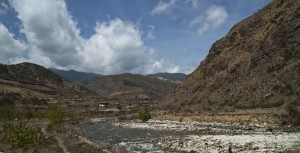
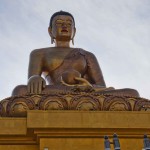
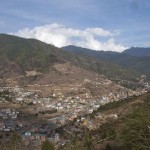
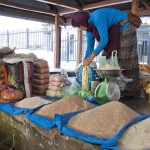
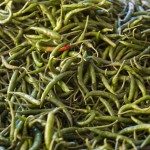
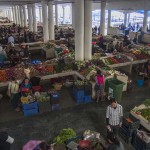
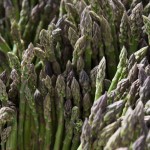
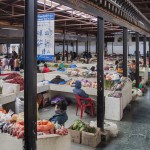
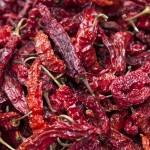
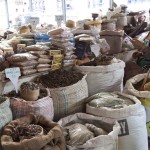
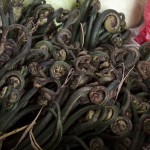
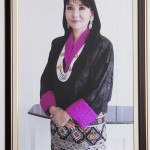
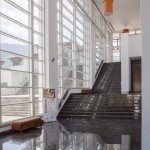
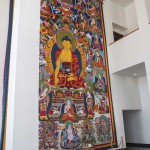
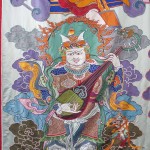
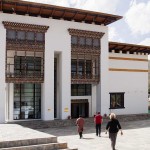
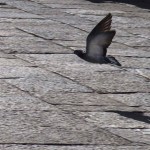
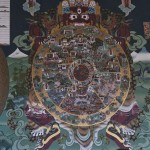
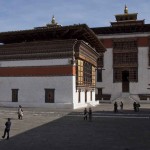
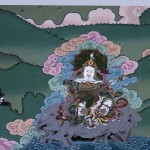
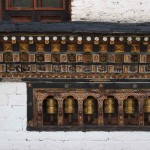
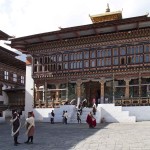
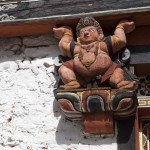
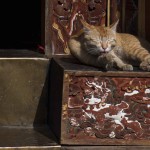
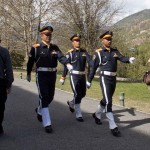
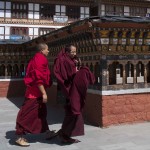
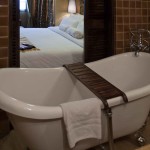
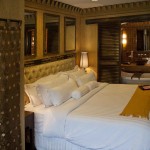
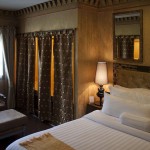
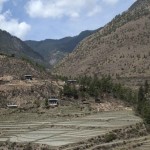
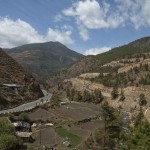
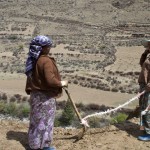
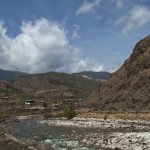
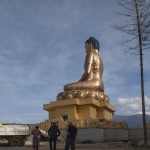
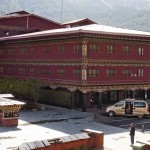
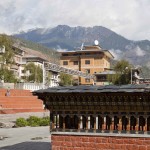
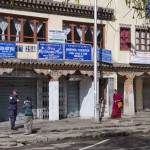
Pingback: Bhutan (Part 2) – Paro’s Tsechu Festival – bontaks travels
Pingback: Bhutan (Part 1) – Paro – bontaks travels
Pingback: Bhutan (Part 4) – Punakha – bontaks travels